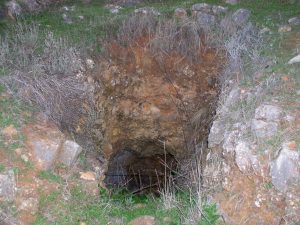The route begins at the junction with the royal path of Loja in the area of “Chite” (Route 5). After leaving the path to the left that goes to “La Zarzuela”, this path descends towards “La Viña”.
After about 500 m, we find a first crossroads where we must turn right along the path that continues to the enclave “La Solana”, crossing traditional farmhouses between olive groves and small patches of holm oak.
The tour then heads towards the “Sierra de La Tosquilla”, ending in an old mining town, of great cultural interest. From here there is a connection with the “Parque Cesna” trail network, after 1 km downhill in a westerly direction towards “Río Pesquera”.

environmental
As a fundamental element of this path that runs behind the “Sierra de Chite” in a southerly direction, we will highlight the “Sierra de La Tosquilla”, a massif belonging to the Subbético Medio complex with limestone outcrops on the summit (canchales) covered with an interesting grassland mid-mountain. The latter also presents Triassic materials (clay, gypsum marl, sandstone, etc.). Despite this exceptional geological context, the area is poorly crossed by a large-flow hydrographic network, although there are sporadic torrents such as the “Arroyo del Salto”, a minor tributary of the Pesquera River and sources such as the “Fuentes de Cortijo Solana”.
Perhaps favored by this montane character, large isolated feet of holm oaks and gall oaks are still preserved around the rural buildings and interesting patches of Mediterranean vegetation such as those that appear at the beginning of the route and to the north of the ruins of the mining town. This complexity in the habitat and the existence of vertical forest masses, conditions the presence of vertebrates such as the Short-toed Eagle and the Buzzard that need trees for nesting and resting. Eagle Owl sightings towards the “Río Pesquera” are also frequent.
In addition, there are good populations of game species, especially the native Red Partridge on the middle and lower slopes of the mountain ranges that surround the route.

Cultural
Mining, although present since the 3rd millennium BC, is during the medieval period when it acquires a substantial boost as an economic exploitation. The benefited mineral was the iron present together with ocher used for dyes. These ethnological resources, inherited from the medieval and contemporary mining activities that were practiced in the surrounding mountains are “Cortijos La Solana”, “quarries and iron mines of the “Sierra Tosquilla”, “Cortijo Tosquilla” hacienda, “La Yesera ” (plaster kiln), Via Pecuaria, etc.
The mining area of Sierra Tosquilla has a relevant architectural and industrial ensemble that is very well preserved, which remained in operation from medieval times until the fifties of the 20th century.
During the medieval phase, in these quarries of Sierra Tosquilla, exploitation tasks were carried out by means of quarry fronts or calerías from the surface of the outcropping iron veins and the first separation of gangues. After the control of the mineral for taxation in Torre Pesquera (located in the basin of said river in the western foothills of the massif), the mineral was transported by stables and barges to the Guadalquivir basin and thus supply the furnaces of the exceptional metallurgical crafts from the medieval Andalusian capital, Córdoba.




